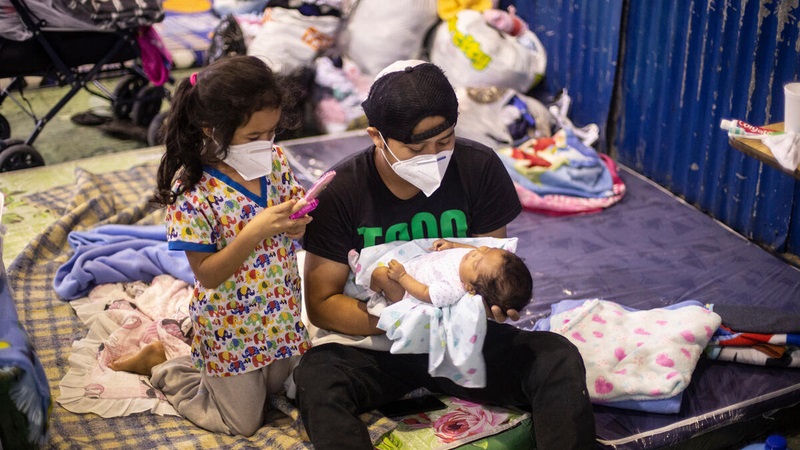Climate disasters cascade across continents and oceans – countries must tackle them together
Picture this: The lush rice fields of South and Southeast Asia are withering away due to prolonged droughts, causing a significant drop in rice yields.
In a bid to prioritise their own citizens’ needs, several countries make the difficult decision to either restrict or ban rice exports entirely.
The domino effect is swift. Countries far from these drought-stricken areas, relying on rice imports, are hit with soaring prices and food scarcities.
World Bank controversy sends loss and damage talks into overtime
Such a disruption, caused by weather extremes, exemplifies a transboundary climate risk. These risks don’t respect national borders.
They ripple across continents, creating a cascade of global repercussions. And this isn’t a mere hypothetical situation.
Back in 2008, this exact scenario unfolded, leading to hunger and food riots in West African countries that heavily depend on rice imports.
Global goal on adaptation
At Cop28, government negotiators are expected to approve a framework to operationalise the Paris Agreement’s global goal on adaptation (GGA) to climate threats like this.
It will do this by enhancing adaptive capacity, strengthening resilience and reducing vulnerability, and thus ensuring an adequate adaptation response and contributing to sustainable development.
The Paris Agreement clearly identifies adaptation as a priority on par with emissions-reduction, yet tracking progress towards the adaptation goal has posed “methodological, empirical, conceptual and political challenges”, as noted by the Adaptation Committee in 2021.
Climate diplomats pay tribute to Pete Betts, EU negotiator who helped land Paris Agreement
The two-year Glasgow–Sharm el-Sheikh work programme on the global goal on adaptation was agreed at Cop26 to address these challenges.
The work programme is expected to present a draft framework for approval at Cop28. One issue that several Parties, country groups and observer organizations have sought to call attention to is the need to consider transboundary climate risks across the adaptation cycle and in adaptation support, along with risks arising at the local and national levels.
Such an approach would reflect the spirit of the Paris Agreement, which recognizes adaptation as global challenge with local, subnational, national, regional and international dimensions.
Transboundary climate risks – which arise when countries share natural resources (e.g. a river basin) or are connected through trade or the movement of people or finance – highlight the importance of international cooperation to build global resilience.
Small islands struggle to get help from UN’s flagship climate fund
The framework to be approved in Dubai thus presents an opportunity to enhance the world’s understanding of the complexity of climate risk, and to bring that perspective to the global stocktake and to future discussions on adaptation finance and capacity-building.
It is also a chance to send a strong message about the need for countries to work together to find adaptation solutions that truly reduce climate risks, and don’t simply shift them.
In a new Adaptation Without Borders discussion brief, we identify entry points for integrating transboundary climate risks in the framework.
Recognising that key decisions about the framework have yet to be made, and different governments and negotiating groups have different priorities, we considered a range of options, taking into account the stages of the adaptation cycle and themes to be covered by the framework.
Our main message is that it’s time to address transboundary climate risks at the highest levels of global climate cooperation, recognizing them as a vital aspect of global adaptation efforts.
For Cop28, this means:
- Including an overarching statement on the specific need to build global resilience to transboundary climate risks in the decision on the GGA;
- Integrating transboundary climate risks in the GGA framework’s articulation of each stage of the adaptation cycle – impact, vulnerability and risk assessment; planning; implementation; and monitoring, evaluation and learning; in the cross-cutting discussion on means of implementation, and in addressing the themes covered by the framework; and
- Adopting specific targets and indicators on transboundary climate risks and cross-border collaboration, as these are developed.
A detailed GGA framework with clearly articulated targets and indicators would provide a strong foundation for the global stocktake and for efforts to accelerate and scale up action to build resilience to climate risks at all levels.
Agreeing on the details will take time, however, and the work is expected to continue after Cop28. Explicitly
Read More

